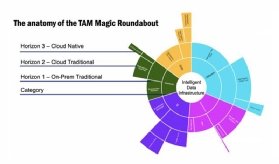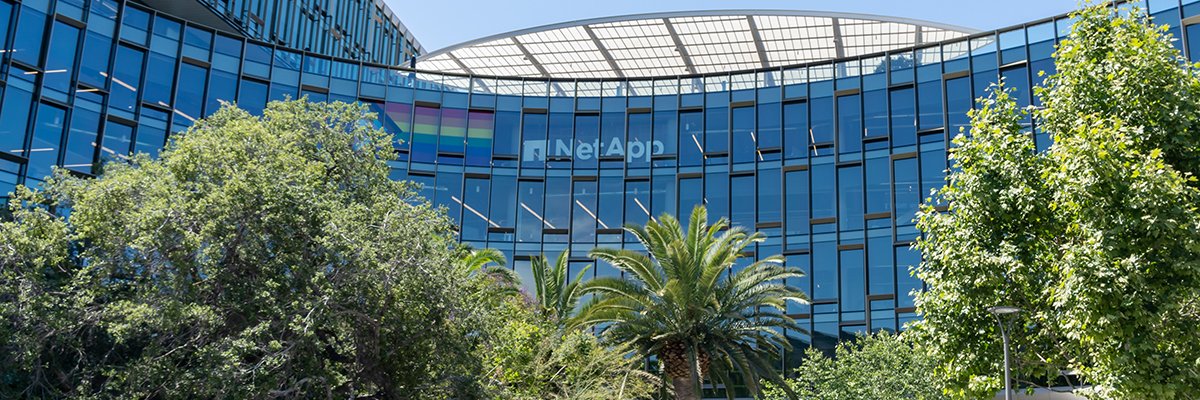Customer tolerance to supplier lock-in is exhausted due to the “shock” that came from changes in VMware licensing. That's the verdict from NetApp, which announced a set of predictions for IT in 2025 – and storage in particular – this week.
In addition, security as a service – manifested in disaster recovery as a service (DRaaS) – will take center stage, excitement over AI will calm, investment in energy infrastructure will go through big changes, and operating sustainably will become vitally important.
Those are changes to the IT and storage landscape predicted by NetApp and its chief technology evangelist Matt Watts, which flow from his team's use of a “Magic Roundabout” to visualize upcoming tech and operating environment roadmaps (see diagram below,
According to Watts, who spoke at the company's Insight event in London this week, changes to VMware's licensing model will impact everyone's idea of lock-in and their resistance to it.
“The VMware events brought a general shock in the market,” he said. “The aftershocks are that organizations are reducing VMware licensing – where there tends to be a lot of waste – looking at alternative strategies and accelerating towards containerization systems,
“We think we'll see people re-evaluate the whole idea of lock-in, and that will affect all future strategies. The VMware changes caught people off-guard and some will be asking if they should have had a more multi-vendor approach in their VMware environment.”
Next on the prediction list from NetApp is a huge growth in security as a service. That will manifest as adoption of DRaaS in particular as a result of the growth in cyber attacks and the advent of the NIST 2 cyber security and DORA digital resiliency frameworks.

That's because underpinning responses to cyber attacks is the ability to roll back to last good copies of data or to failover to clean infrastructure, which DR provides, and which is very complex and costly to do in-house.
Third is that the “euphoria” around AI will diminish as projects fall short on delivering promises. That will also affect storage suppliers that have tied themselves to AI too strongly, said Watts.
“There will be a reality check when expectations don't meet reality,” said Watts. “Companies that have invested heavily in AI could find the results disappointing. “More focus and rigor will be applied to projects and some storage companies that have been over-exposed as they pinned their value propositions to AI.”
Also, Watts predicted that governments will begin to invest heavily in infrastructure to support the huge changes being driven by IT, in particular AI.
These center on the need for power and water. He cited a recent example in Ohio, US.
“Around 80 datacentres – with energy needs equivalent to 20 million households – were ready to go live but they couldn't until they agreed to pay 90% of their power costs up front. It was the only way the electricity companies could get the investment needed to build the infrastructure.”
Watts also pointed to the increase in power needed by the average datacentre rack, up from around 7kW 10 years ago to 150kW now in an AI deployment.
Ultimately, the need to demonstrate an organization is being run sustainably – even to the extent of its cloud providers operating in a sustainable fashion – will be of vital importance.
With frameworks such as the European Corporate Sustainability Reporting Directive coming in, the emissions of an organization's cloud providers are taken into account too. And that's not all, said Watts.
“People want to work for sustainability-oriented companies,” he said. “That's a benefit when it comes to recruiting and retaining a workforce. And sustainability is becoming a competitive differentiator.”
The predictions result from Watts's team's use of its Magic Roundabout. This is something like the Sunburst Chart format popularized by Microsoft, which allows for visualization of a large amount of disparate data in hierarchies.
The team used it internally to get a handle on a complex storage and cloud market, but according to Watts, it could be deployed as a customer engagement tool to help organizations plan for the future in technology terms.
That would include “modeling a substantial amount of tech changes and innovations over time and out to things like DNA storage and quantum computing”, he said.


